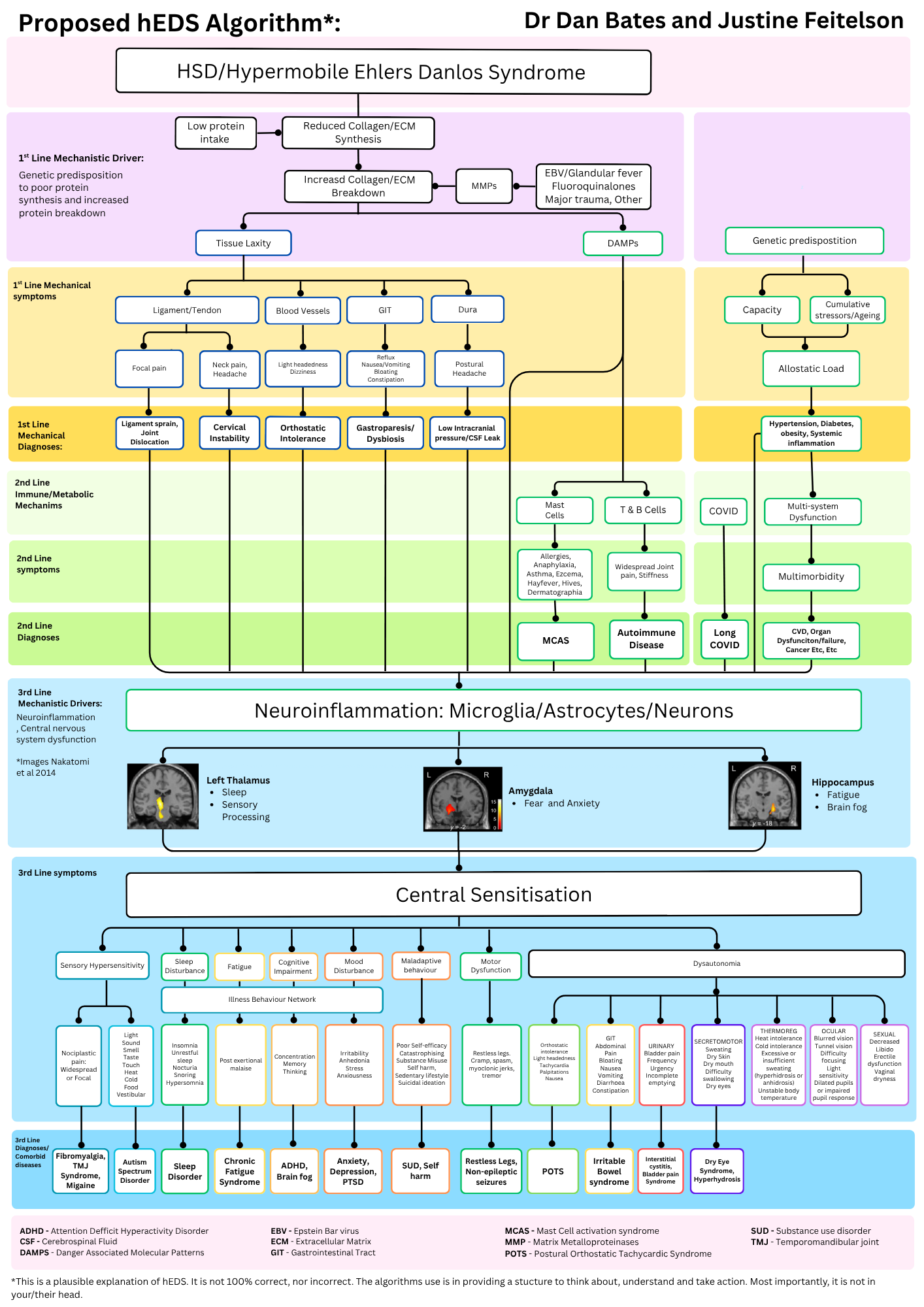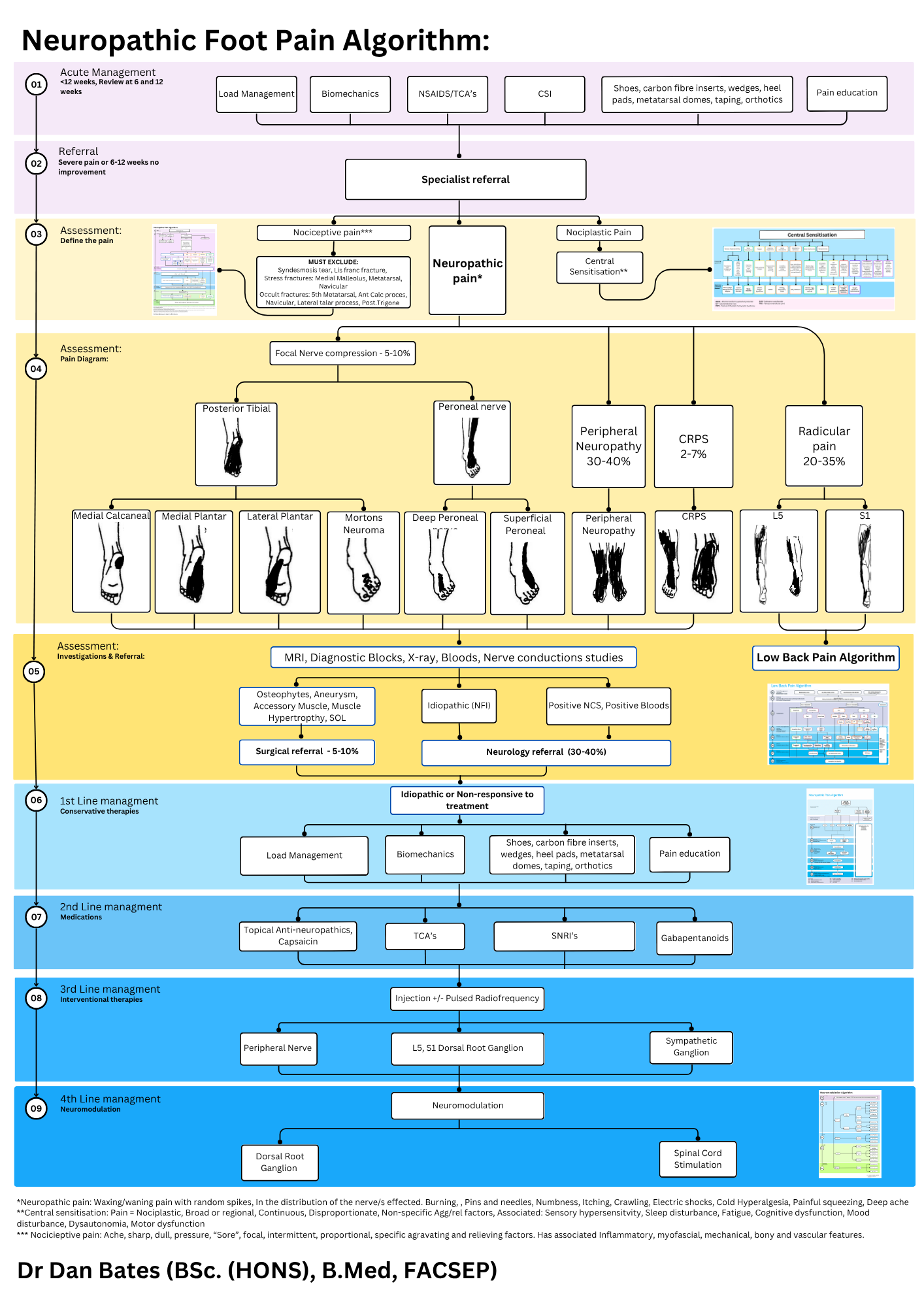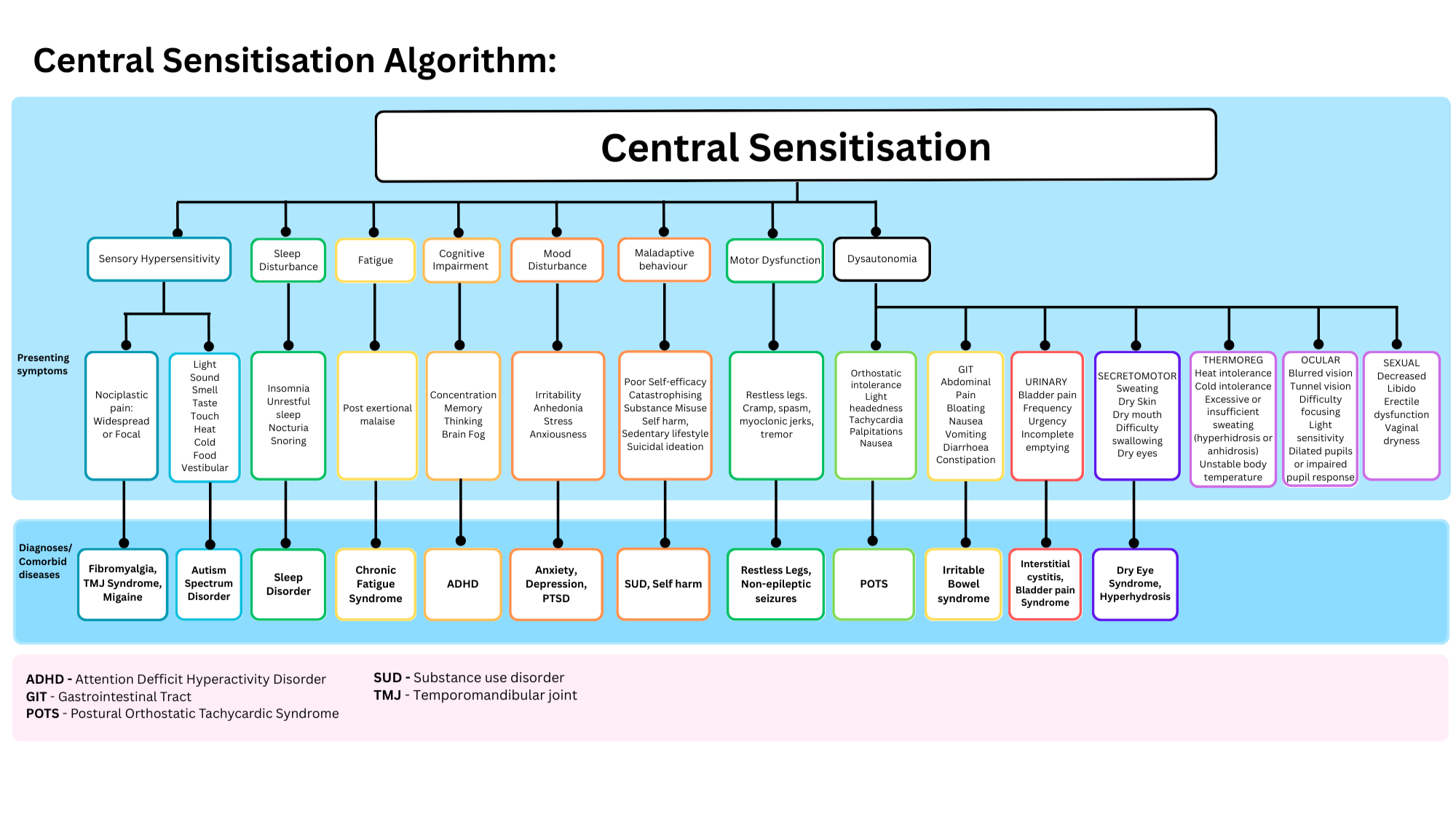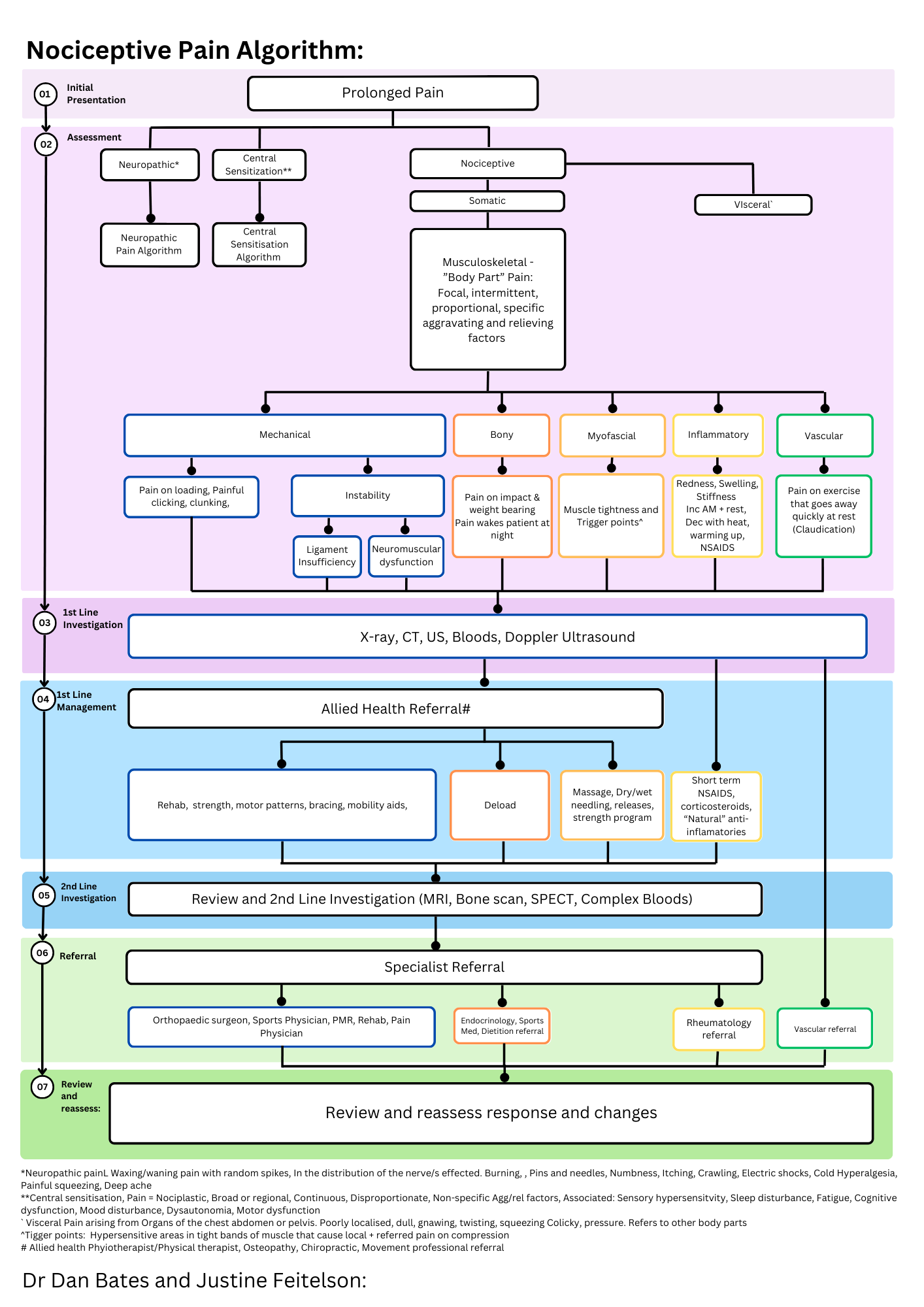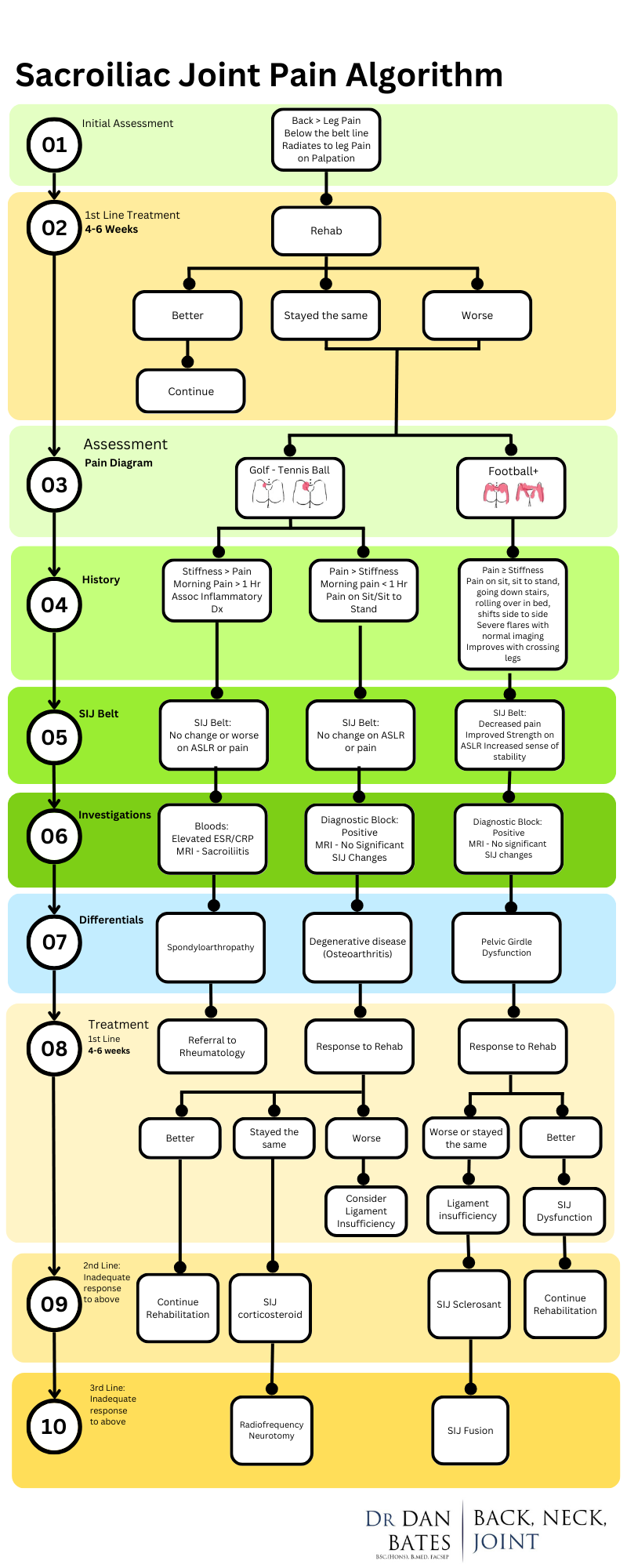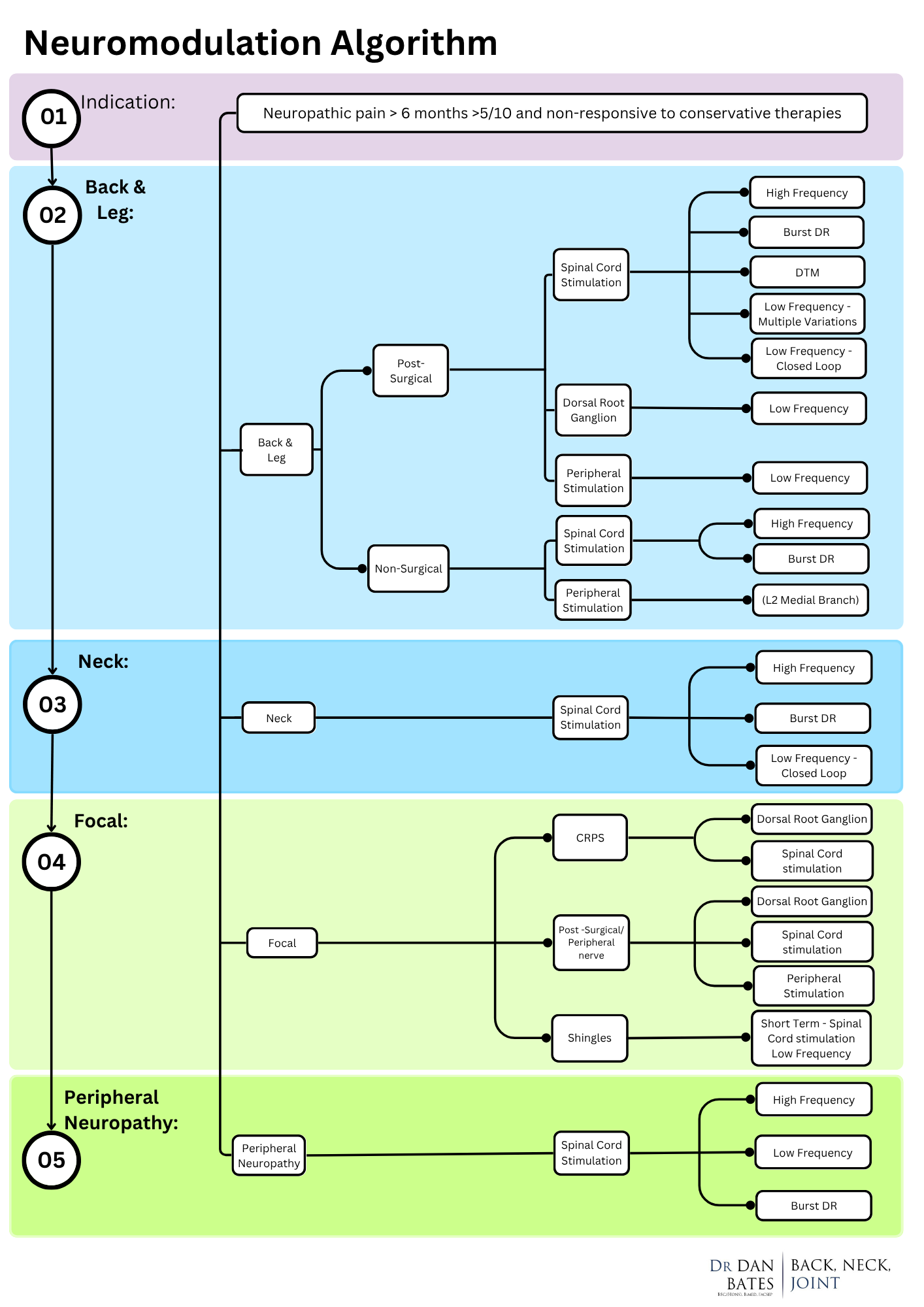Dan’s Algorithms
Over the years of working with patients who experience various types of pain, I’ve come to understand the complexity and individual nature of pain management. Each patient’s journey is unique, and I’ve seen firsthand how challenging it can be to find clear, effective solutions. With this in mind, I developed these clinical algorithms to help streamline the assessment and treatment of common pain conditions, ensuring that both clinicians and patients have a structured, reliable approach to care.
These tools are the result of years of experience, research, and an ongoing commitment to improving patient outcomes. I hope they can serve as a valuable resource in the clinical decision-making process.
To support this mission even further, I’ve launched a podcast with Justine Feitelson called It’s Not In Your Head. The series is designed to break down the disconnect between patients and providers by tackling the “why” and the “how” of pain. I bring the clinical science, diagnosis and systems thinking; Justine brings the lived experience, the implementation, and the patient voice. Together, we explore the many pieces of the pain puzzle and how to piece them together for better outcomes.
Hypermobile Ehlers Danlos Syndrome Algorithm
Purpose: This algorithm is designed as a thinking tool to work through the complicated presentation of hypermobile EDS
Use This When: It is meant as a thinking tool to better understand the interaction between muliple associated co-morbidities, and to give a framework of where to start.
Authors
Dr Dan Bates And Justeine Feitelson
Neuropathic foot pain Algorithm
Purpose: This algorithm is designed as a thinking tool to work through the complicated presentation of neuropathic foot pain.
Use This When: USe it as a means to tick off all conservative measures have been completed, all reasonable investigations are complete and the diagnosis is correct. It the allows you to walk through increasing levels of intervention to hopefully find a solution for the patient.
Authors
Dr Dan Bates
Read more about Neuromodulation here
Central Sensitisation Algorithm
Authors : Dr Dan Bates and Justine Feitelson
Purpose: The algorithm aimed to have a provide a stucture for thinking about Central sensitisation.
Use This When: A patient reports disproportionate widespread pain.
If you want to delve deeper into this algorithm, listen to episode 13 of the It’s Not In Your Head podcast.
Neuropathic Pain
A Comprehensive Algorithm for Management of Neuropathic Pain
Authors
Daniel Bates, B Carsten Schultheis, Michael C Hanes, Suneil M Jolly, Krishnan V Chakravarthy, Timothy R Deer, Robert M Levy, Corey W Hunter
Neuropathic Pain Algorithm
Read more about Neuropathic Pain here
Authors
Daniel Bates, B Carsten Schultheis, Michael C Hanes, Suneil M Jolly, Krishnan V Chakravarthy, Timothy R Deer, Robert M Levy, Corey W Hunter
Purpose: The algorithm aimed to simplify the management of neuropathic pain by combining all international guidelines into a simple visual tool. The guidelines remain ostensibly unchanged, and I hope it is of some assistance to you and your patients.
Use This When: A patient reports pain that is burning, tingling, or shooting in nature, often associated with conditions such as diabetic neuropathy, post-surgical neuropathy, or nerve compression. It helps guide the clinician in diagnosing and providing effective treatment for nerve-related pain.
If you want to delve deeper into this algorithm, listen to episodes 5 and 17 of the It’s Not In Your Head podcast.
Nociceptive (Body part) pain Algorithm
Purpose: The algorithm aimed to simplify the management of nociceptive pain without the need for a diagnosis.
Use This When: A patient reports pain that is focal pain that is and ache sharp dull or a pressure. It may also have inflammatory, myofascial, bony, mechanical, or vascual features.
Authors: Dr Dan Bates and Justine Feitelson
If you want to delve deeper into this algorithm, listen to episode 24 of the It’s Not In Your Head podcast.
Low Back Pain Algorithms
Purpose: This algorithm helps clinicians systematically assess and treat low back pain, one of the most common and debilitating conditions seen in clinical practice.
Use This When: A patient presents with chronic or acute low back pain, and you need a structured approach to evaluate the underlying causes and determine the best course of treatment. It can also help when pain persists despite initial interventions or when the cause of pain is unclear.
Authors: Daniel Bates
If you want to delve deeper into this algorithm, listen to episode 20 of the It’s Not In Your Head podcast.
5 Minute Low Back + / - Leg Pain Algorithm
Purpose: Designed for rapid assessment of patients with low back pain radiating to the legs, this algorithm helps to differentiate between neuropathic and musculoskeletal causes of pain.
Use This When: A patient presents with low back pain accompanied by leg pain, tingling, or numbness, especially when you're trying to quickly identify whether nerve involvement (e.g., sciatica or radiculopathy) is present.
Authors
Dr Dan Bates
Sacroiliac Joint Pain Algorithm
Read more about the Sacroiliac Joint here
Purpose: This algorithm assists in diagnosing and treating sacroiliac joint pain, which can often be confused with other sources of lower back or hip pain.
Use This When: A patient presents with pain localised to the lower back or buttocks, particularly if the pain is aggravated by specific movements or positions. It is most useful when other common causes of pain, such as lumbar disc herniation, have been ruled out.
Authors
Dr Dan Bates
Persistent Shoulder Pain
Purpose: This algorithm focuses on identifying the underlying causes of persistent shoulder pain, whether due to musculoskeletal, nerve-related, or other sources.
Use This When: A patient has had ongoing shoulder pain that has not improved with initial treatments. This algorithm helps differentiate between conditions like rotator cuff injury, impingement syndrome and referred pain from the neck or spine.
Authors
Dr Dan Bates
Neuromodulation Algorithm
Purpose: This algorithm aids in the selection and implementation of neuromodulation therapies, such as spinal cord stimulation or peripheral nerve stimulation, for patients with chronic, refractory pain.
Use This When: A patient has not responded to traditional pain management approaches, and you are considering advanced therapies to manage chronic pain. It helps determine when neuromodulation might be an appropriate next step.
Authors
Dr Dan Bates
Read more about Neuromodulation here
If you want to delve deeper into this algorithm, listen to episode 17 of the It’s Not In Your Head podcast.


